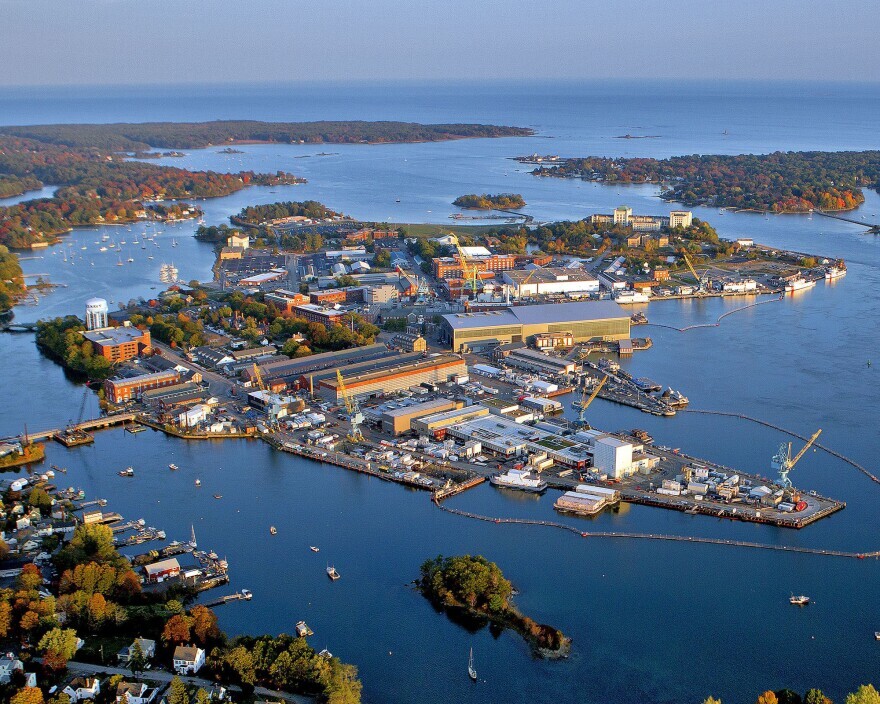Portsmouth Naval Shipyard tends the nation’s submarines. That won’t protect it from rising tides

This October 2015 handout photo provided by the Portsmouth Naval Shipyard, shows the shipyard base in Kittery, Maine.
“Climate resilience” has become a phrase that describes the efforts of scientists, conservationists and government officials to respond to sea-level rise, intense storms, and increasing temperatures.
The concept is getting the attention of military planners as well, and in Maine, the Portsmouth Naval Shipyard in Kittery is hardening its own historic facilities against higher tides, and adding flexibility to on-site energy systems.
This story is part of our series “Climate Driven: A deep dive into Maine’s response, one county at a time.“
For more than two centuries, the shipyard’s been nestled on Seavey Island at the mouth of the Piscataqua River. With roughly 8,000 people there on any given day, it’s a small town unto itself — an entire community focused on a singular goal — the upkeep of this nation’s fleet of submarines.
You might think that high-tech submersibles would be uniquely suited to riding out the volatile effects of climate change. But, not when they’re in drydock.
“When you have a submarine in overhaul in the dry dock, it’s not water-tight any more. Right? We cut holes in the side of the submarine for access to get into different parts of the submarine so we can bring services in, so we can bring bigger equipment out,” says Captain Dan Ettlich, the shipyard’s commander.
He said, “You could imagine a worst-case event would be you get water coming over the drydock that’s greater than the capacity of the dry dock pumps to keep up with, and now you start getting get a water-level event in that drydock and potentially hazarding the asset that we’re working on.”
